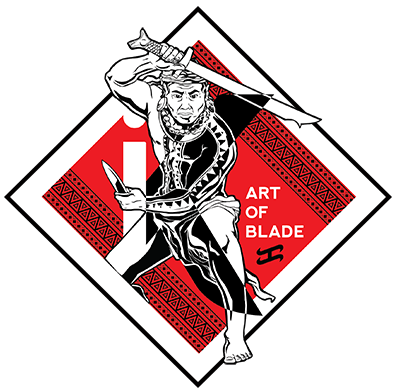WHAT IS iKALI?
History
iKali, founded by Tuhon Apolo Ladra is an indigenous fighting art in its truest form, is a
systematic art of combat fighting based on the science of Strategic and Tactical
applications of Counter-Offensive techniques as defense. It’s methodology of “Learn to
Teach, Teach to Learn” speaks of its core process of Know, Understand and Apply in
order to “Flow”.
iKali is a complete system for Self-Protection. Characteristic for iKali is the use of one or
two arm-long sticks, swords and knives for practice (and fighting). The combative
strategies and tactics within iKali are developed within motion and the mechanics of the
flow and are structured according to the characteristics of the weaponry employed -
whether it be edged, impact or empty hand - combined with the principles of human
anatomy, physiology, and kinesiology as the foundation and basis for tactical
manipulation and application.
iKali, is the indigenous fighting art of the Philippines. With its Cultural and Philosophical
values its history traces back more than 1500 to 2000 years in the past. The
Pekiti-Tirsia System of Kali originates from the province of Negros Occidental,
Philippines and was formulated by the Tortal family of Negros and Panay islands. The
family patriarch, Conrado B. Tortal, passed this system and its attributes onto his only
grandson, the sole heir and its present guardian, Grand Tuhon Leo T. Gaje Jr. Majority
of Police Officers and Law enforcement personnel in the US, Europe, and Asia have
viewed the Police Training Film “Surviving Edged Weapons” which was produced by
Calibre Press Of Chicago, USA, recognized worldwide as the best training tape on
Edge Weapon awareness which featured GrandTuhon Leo T. Gaje Jr. Pekiti-Tirsia Kali
is the only system recognized by the Philippine government including the teaching of
the system to the elite ForceRecon Philippine Marine Battalion, Armed Forces of the
Philippines.
Where did it come from?
iKali, is the indigenous fighting art of the Philippines. With its Cultural and Philosophical
values its history traces back more than 1500 to 2000 years in the past. The
Pekiti-Tirsia System of Kali originates from the province of Negros Occidental,
Philippines and was formulated by the Tortal family of Negros and Panay islands. The
family patriarch, Conrado B. Tortal, passed this system and its attributes onto his only
grandson, the sole heir and its present guardian, Grand Tuhon Leo T. Gaje Jr. Majority
of Police Officers and Law enforcement personnel in the US, Europe, and Asia have
viewed the Police Training Film “Surviving Edged Weapons” which was produced by
Calibre Press Of Chicago, USA, recognized worldwide as the best training tape on
Edge Weapon awareness which featured GrandTuhon Leo T. Gaje Jr. Pekiti-Tirsia Kali
is the only system recognized by the Philippine government including the teaching of
the system to the elite ForceRecon Philippine Marine Battalion, Armed Forces of the
Philippines.
How is it Different?
The distinguishing characteristics of Kali and of the Filipino Martial arts is the principle
that weaponry is instructed first and then progresses into the final stage to empty hands
skills. The strategic reasoning behind this structure is that:
- The nature of warfare is the utilization of weaponry – not empty hands.
- Attribute development – the use of weaponry, and bladed weapons in particular,
develops and enhances combative attributes and application at a more intensive level
and faster rate than empty hands training.
- The Filipino methods of empty hand combat are derived directly from the application of weaponry versus having completely different styles of empty hands skills and weaponry techniques. This principle of parallel methodology and transferable technology in its truest form can only be found within Filipino martial arts. In the modern application these methods and skills transfer from bladed, impact and other edged weapons to empty hands combat and directly back to weapons including modern firearms.
